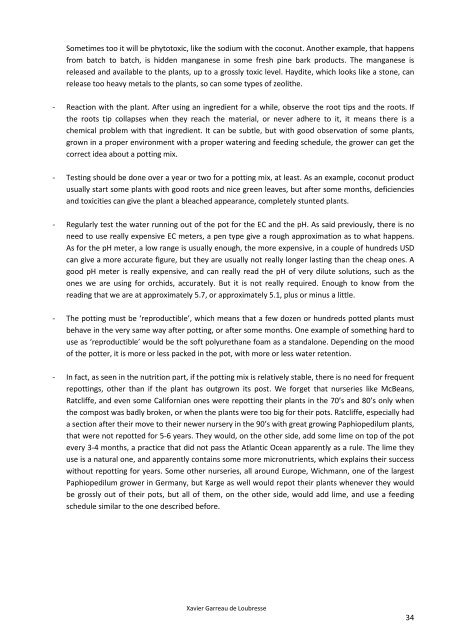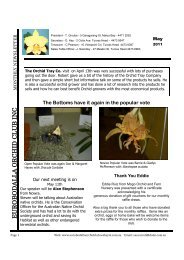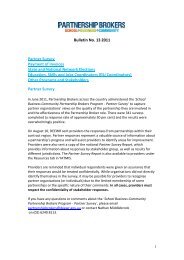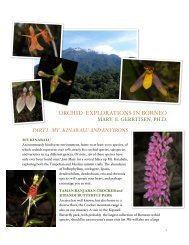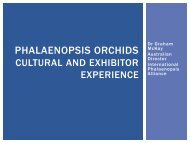Orchid Growing Substrates
Orchid Growing Substrates
Orchid Growing Substrates
You also want an ePaper? Increase the reach of your titles
YUMPU automatically turns print PDFs into web optimized ePapers that Google loves.
Sometimes too it will be phytotoxic, like the sodium with the coconut. Another example, that happens<br />
from batch to batch, is hidden manganese in some fresh pine bark products. The manganese is<br />
released and available to the plants, up to a grossly toxic level. Haydite, which looks like a stone, can<br />
release too heavy metals to the plants, so can some types of zeolithe.<br />
- Reaction with the plant. After using an ingredient for a while, observe the root tips and the roots. If<br />
the roots tip collapses when they reach the material, or never adhere to it, it means there is a<br />
chemical problem with that ingredient. It can be subtle, but with good observation of some plants,<br />
grown in a proper environment with a proper watering and feeding schedule, the grower can get the<br />
correct idea about a potting mix.<br />
- Testing should be done over a year or two for a potting mix, at least. As an example, coconut product<br />
usually start some plants with good roots and nice green leaves, but after some months, deficiencies<br />
and toxicities can give the plant a bleached appearance, completely stunted plants.<br />
- Regularly test the water running out of the pot for the EC and the pH. As said previously, there is no<br />
need to use really expensive EC meters, a pen type give a rough approximation as to what happens.<br />
As for the pH meter, a low range is usually enough, the more expensive, in a couple of hundreds USD<br />
can give a more accurate figure, but they are usually not really longer lasting than the cheap ones. A<br />
good pH meter is really expensive, and can really read the pH of very dilute solutions, such as the<br />
ones we are using for orchids, accurately. But it is not really required. Enough to know from the<br />
reading that we are at approximately 5.7, or approximately 5.1, plus or minus a little.<br />
- The potting must be ‘reproductible’, which means that a few dozen or hundreds potted plants must<br />
behave in the very same way after potting, or after some months. One example of something hard to<br />
use as ‘reproductible’ would be the soft polyurethane foam as a standalone. Depending on the mood<br />
of the potter, it is more or less packed in the pot, with more or less water retention.<br />
- In fact, as seen in the nutrition part, if the potting mix is relatively stable, there is no need for frequent<br />
repottings, other than if the plant has outgrown its post. We forget that nurseries like McBeans,<br />
Ratcliffe, and even some Californian ones were repotting their plants in the 70’s and 80’s only when<br />
the compost was badly broken, or when the plants were too big for their pots. Ratcliffe, especially had<br />
a section after their move to their newer nursery in the 90’s with great growing Paphiopedilum plants,<br />
that were not repotted for 5-6 years. They would, on the other side, add some lime on top of the pot<br />
every 3-4 months, a practice that did not pass the Atlantic Ocean apparently as a rule. The lime they<br />
use is a natural one, and apparently contains some more micronutrients, which explains their success<br />
without repotting for years. Some other nurseries, all around Europe, Wichmann, one of the largest<br />
Paphiopedilum grower in Germany, but Karge as well would repot their plants whenever they would<br />
be grossly out of their pots, but all of them, on the other side, would add lime, and use a feeding<br />
schedule similar to the one described before.<br />
Xavier Garreau de Loubresse<br />
34


